Detroit Riverfront and Belle Isle’s new bike path
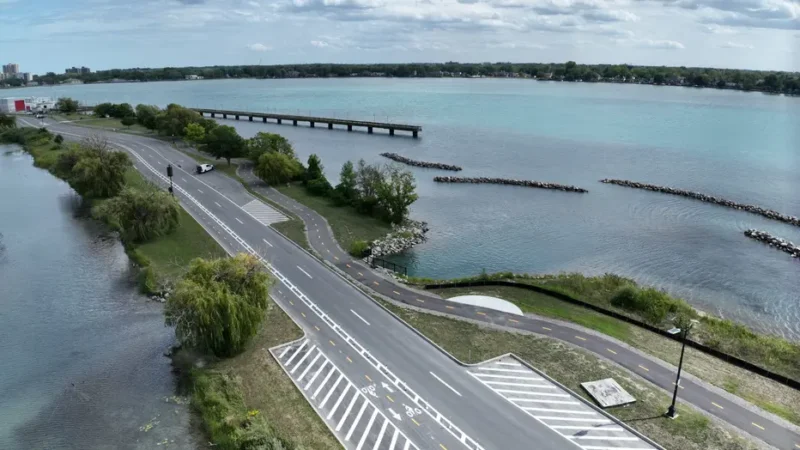
If you live in the state of Michigan, you’ll feel proud to know that not only was Detroit’s award-winning Riverwalk – named best in the nation for three years straight, but the longest state-designated trail in the U.S. just got a little longer with the completion of another stretch of the Iron Belle Trail.
The network seeks a continuous, unbroken pathway stretching from Belle Isle in Detroit to the western end of the Upper Peninsula. With the latest slice of trail finished, it means that 70% of the trail is now complete with Belle Isle’s new bike path completing one end of the 2,000-mile Iron Belle Trail.
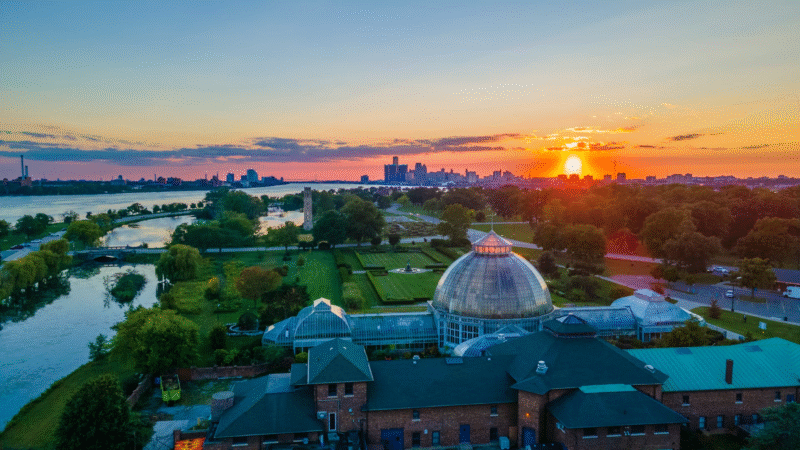
The Department of Natural Resources in Michigan announced the state had finished a 5.8-mile trail that includes a newly completed park along the Detroit River. It also completes another portion of the ongoing work on the Joe Louis Greenway, which will provide a looped pathway around Detroit, through Hamtramck and Highland Park, and by several landmarks in the city. The Detroit Riverfront now includes more than 50 acres of parks and green spaces connected by over 7 miles of Riverwalk and greenways and continues to grow and become part of the 27.5-mile loop. It also includes connectors along Livernois and McNichols. It will include the Dequindre Cut and portions of the Detroit Riverwalk, as well as portions of the planned Iron Belle Trail and Southwest Greenway. When completed, it will provide a place for people of all abilities to safely walk, bike, and run while connecting neighborhoods, parks, schools, jobs, historic sites, commercial corridors and public transit.
Coming from a gal who’s lived in Michigan all her life and grew up in Detroit, this is such great news. Like many big cities in the US, Detroit fell upon hard times during the late 60’s, when things began tumbling out of control due to lack of foresight, a changing economy, civil unrest and political ineptitude.
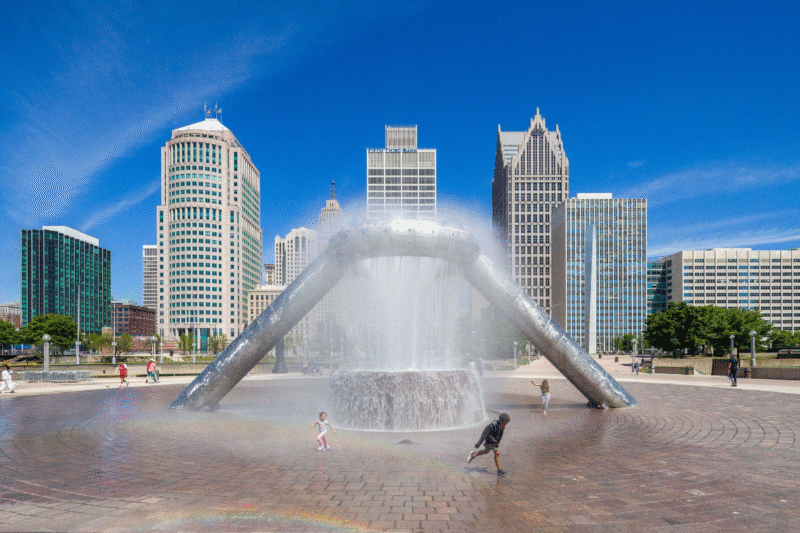
While many cities had exciting and beautiful waterfronts – think of Chicago, ours was neglected and sad. Sure, we had improvements with the blossoming of Hart Plaza, located south of the intersection of Jefferson and Woodward Avenues, however, we still had a long way to go. Opened in 1975, the 14-acre plaza occupies an area replete with ferry boats, steamers and ticket offices. Today, Hart Plaza is a popular focal point for festivals and public gatherings with the capacity of 40,000 people. It was a good beginning, yet most of the area along the Detroit River, left much to be desired. Even Cobo Hall/Center (opened in 1960 and now known as Huntington Place since December 2021), was built with no view of the waterfront. The expansive undertaking provides events including the annual North American International Auto Show, the International G-7 Job Summit, the annual Society of Automotive Engineers International Congress, and the world’s largest sit-down dinner, hosted by the Detroit NAACP Freedom Institute. It was also the former home of the Detroit Pistons
Once owned and operated by the City of Detroit, the Detroit Regional Convention Facility Authority (DRCFA) took over operations of Cobo Center in 2009, in conjunction with the Michigan State Legislature, the City of Detroit, and Wayne, Oakland and Macomb counties and now sports numerous upgrades including a three-story, 30,000 square foot atrium with a view of the river, and public access all around the building.
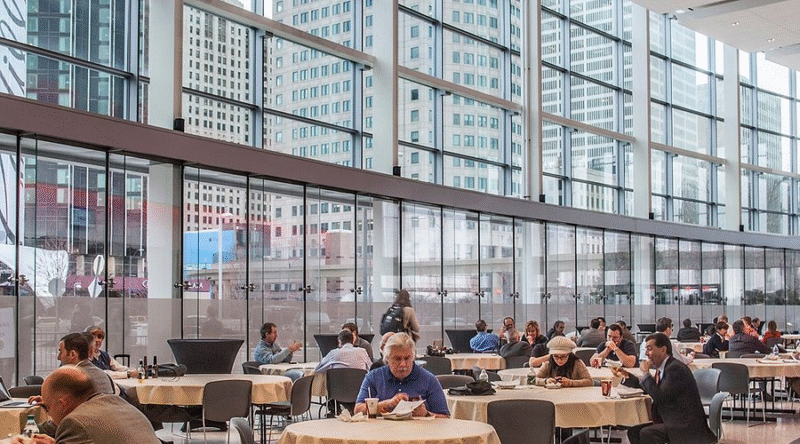
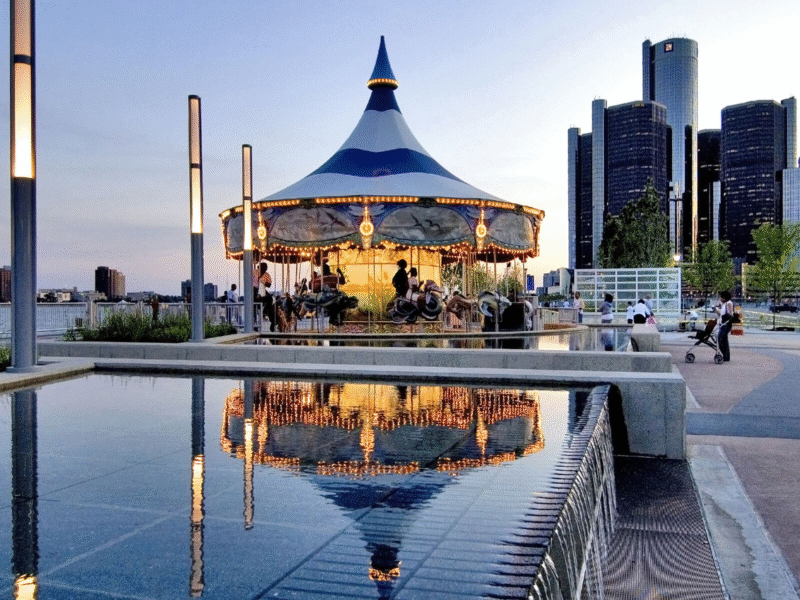
With the addition of Detroit riverfront’s Ralph Wilson Centennial Park opening in October of 2025, the expansive project just got even better. The 22-acre new park will be made up of basketball courts, a recreation center, and a five-acre garden with play structures for kids. Overseen by the Detroit Riverfront Conservancy, the nonprofit called the undertaking “one of the most significant projects” in its history.
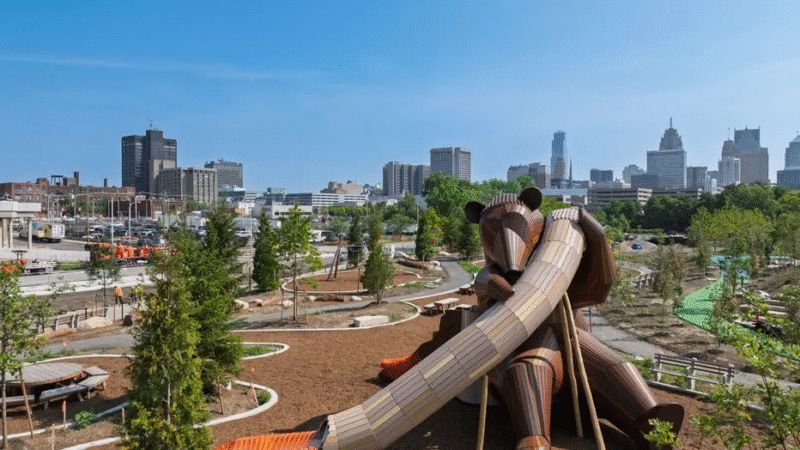
As a native-Detroiter, I’m delighted to see this finally come to fruition. Hats off to all who made this a reality.
